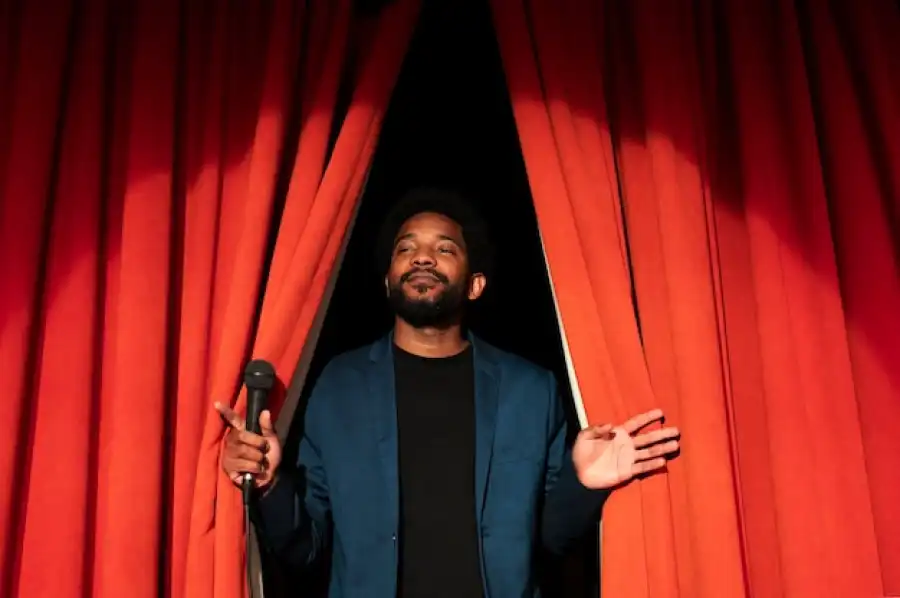The Evolution of Stand-Up Comedy: From Vaudeville to Viral Videos

The Evolution of Stand-Up Comedy: From Vaudeville to Viral Videos
Stand-up comedy is one of the most popular forms of entertainment, bringing humour to audiences worldwide and offering comedians a stage for social commentary, storytelling, and self-expression. Defined by Encyclopaedia Britannica as "a comic style in which a comedian performs in front of a live audience, usually speaking directly to them," stand-up is often a solo act involving quick wit, observational humour, and a special connection with the audience.
Early Beginnings: The Roots of Stand-Up Comedy
Stand-up comedy traces its origins to the early days of vaudeville, music halls, and variety shows in the 19th century. The seeds of modern stand-up comedy were sown here, with performers delivering humorous monologues, sketches, and punchy one-liners. In these settings, comedy became a distinct genre, drawing audiences who sought lighthearted relief from their daily routines.
Comedy as a performance art emerged in different cultures worldwide, but it was particularly influential in the United States and the United Kingdom, where comedic storytelling became a staple in entertainment venues. Early performers developed routines that offered laughs, often by poking fun at social issues or using physical comedy. This groundwork eventually evolved into a more focused and individual comedic style, setting the stage for the development of stand-up comedy as we know it.
Stand-Up Takes Shape: From Vaudeville to Comedy Clubs
In the early 20th century, vaudeville shows in America featured comedians such as Charlie Chaplin and Buster Keaton, whose influence stretched across genres, adding humour to cinema and establishing the comedian as a central figure in entertainment. Meanwhile, in Britain, the music hall tradition—known for its mix of music, comedy, and variety acts—nurtured performers like Max Miller, whose risqué humour and sharp delivery embodied the spirit of stand-up.
As vaudeville declined in the 1930s and 1940s, comedy found a new home in nightclubs and later in dedicated comedy clubs. These clubs provided a platform where comedians could develop a distinctive voice, experimenting with material in front of audiences. In America, the stand-up scene blossomed, with comedians like Bob Hope and Jack Benny delivering monologues full of quick-witted jokes and character-based storytelling. Britain, too, was developing a unique comedic voice, blending humour with satire, which would later become a staple of British comedy.
The 1950s and 1960s: Social Commentary and Cultural Shifts
The 1950s and 1960s marked a revolutionary period in stand-up comedy. In the United States, comedians like Lenny Bruce, Mort Sahl, and Dick Gregory broke away from traditional jokes, opting instead for provocative social commentary. This period saw a shift from purely comedic entertainment to a more rebellious and often controversial form of stand-up that addressed pressing social issues, from politics to civil rights.
In the United Kingdom, comedians like Peter Cook and Dudley Moore, part of the satire boom in the 1960s, pushed boundaries and used comedy as a vehicle for social critique. Known for their work in shows like Beyond the Fringe, Cook and Moore shaped the British satire movement, influencing future generations of comedians. London, as a centre for intellectual and cultural movements, played a crucial role in developing a brand of stand-up comedy that was both sharp-witted and socially aware.
The 1970s and 1980s: The Rise of Comedy Clubs and Television
The stand-up comedy scene exploded in the 1970s and 1980s, thanks in large part to the growth of comedy clubs. In London, clubs like The Comedy Store and Jongleurs became hotspots for emerging talent, allowing comedians to test new material in front of enthusiastic audiences. These venues helped to launch the careers of comedians such as Eddie Izzard, Jo Brand, and Stephen Fry, who went on to achieve international fame.
This period also saw the rise of stand-up comedy on television. Shows like Saturday Night Live in the U.S. and The Comic Strip Presents in the U.K. brought stand-up comedy to wider audiences, establishing a new platform for comedians to showcase their talent. Television provided a launching pad for comedians, allowing them to reach millions and quickly gain popularity. London-based shows also began to gain traction, giving British comedians greater visibility on the global stage.
The 1990s and 2000s: Stand-Up Goes Global
In the 1990s and early 2000s, stand-up comedy continued to expand internationally, with comedians gaining influence in many countries. Global tours became more common, and comedians from London, New York, and Los Angeles began performing internationally, solidifying the global appeal of stand-up comedy.
London’s comedy scene flourished during this time, with venues like Comedy Carnival and others becoming renowned spots for both established comedians and newcomers. The emergence of the top comedy clubs in London provided audiences with a regular lineup of top-tier talent and brought British humour to the forefront. This period was also marked by the growing popularity of comedy festivals, like the Edinburgh Festival Fringe, which became a significant platform for showcasing comedians from around the world.
In addition to live performances, comedy specials on platforms such as HBO and BBC were instrumental in building fan bases for comedians. Shows like Live at the Apollo showcased London-based comedians, helping to position the city as one of the world’s comedy capitals. This era solidified London’s role in the stand-up scene, offering a diverse range of voices and comedic styles that continue to shape global comedy.
The Impact of Social Media and Streaming Services
In the 2010s, social media and streaming platforms brought about another major shift in stand-up comedy. Comedians now had the ability to reach audiences directly, bypassing traditional media channels. Platforms like YouTube, Instagram, and TikTok have allowed comedians to create and share content with minimal barriers, leading to the emergence of internet comedians who have built significant followings online.
Social media has allowed comedians to cultivate audiences globally, while streaming platforms like Netflix made comedy specials widely accessible, further boosting the visibility of stand-up. In London, comedians continue to leverage both traditional venues and digital platforms to build their careers. Streaming platforms have allowed comedians from London and beyond to reach a global audience, cementing the city’s place in the comedy world.
Key Influential Figures in Stand-Up Comedy
Throughout the evolution of stand-up comedy, certain comedians have left a lasting impact on the art form:
Lenny Bruce: Known for his controversial and provocative style, Bruce broke boundaries, addressing social and political issues that were rarely discussed in comedy.
Richard Pryor: Renowned for his fearless honesty and autobiographical style, Pryor brought a new level of emotional depth to stand-up.
Joan Rivers: A trailblazer for female comedians, Rivers was known for her sharp wit and unapologetic approach, paving the way for women in comedy.
Billy Connolly: This Scottish comedian brought storytelling to the forefront of British comedy, blending observational humour with deeply personal tales.
Eddie Izzard: Known for his surrealist style and unique approach to stand-up, Izzard is one of the most influential British comedians of the modern era.
These comedians and many others have contributed to stand-up’s evolution, influencing generations of comedians and changing the way we perceive comedy.
London’s Role in Shaping Stand-Up Comedy
London has been a central figure in the development of stand-up comedy, both as a platform for emerging talent and as a hub of innovation in the genre. The city’s comedy clubs, particularly the top comedy clubs in London, continue to attract comedians and audiences from around the world, maintaining its status as a leading comedy capital.
Venues like Comedy Carnival have become iconic, offering a space for comedians to perform, experiment, and grow. These clubs are celebrated for their role in supporting new talent and for helping shape the landscape of stand-up comedy on a global scale.
The Future of Stand-Up Comedy
As stand-up continues to evolve, its resilience and adaptability remain evident. The blend of live performance and digital platforms is bringing stand-up comedy into new territories and redefining how comedians interact with audiences. London’s comedy scene, with its rich history and vibrant present, stands as a testament to comedy’s enduring appeal and ability to evolve with the times.
As long as there are comedians willing to push boundaries, stand-up comedy will continue to thrive. London's comedy scene is sure to remain at the forefront, offering a space for new voices and cementing its influence on the global stage. Whether you’re watching a comedian at the top comedy clubs in London or streaming a special from home, the essence of stand-up—connection, humour, and social reflection—remains as strong as ever.

{{comment.anon_name ?? comment.full_name}}
{{timeAgo(comment.date_added)}}
{{comment.body}}
{{subComment.anon_name ?? subComment.full_name}}
{{timeAgo(subComment.date_added)}}
{{subComment.body}}